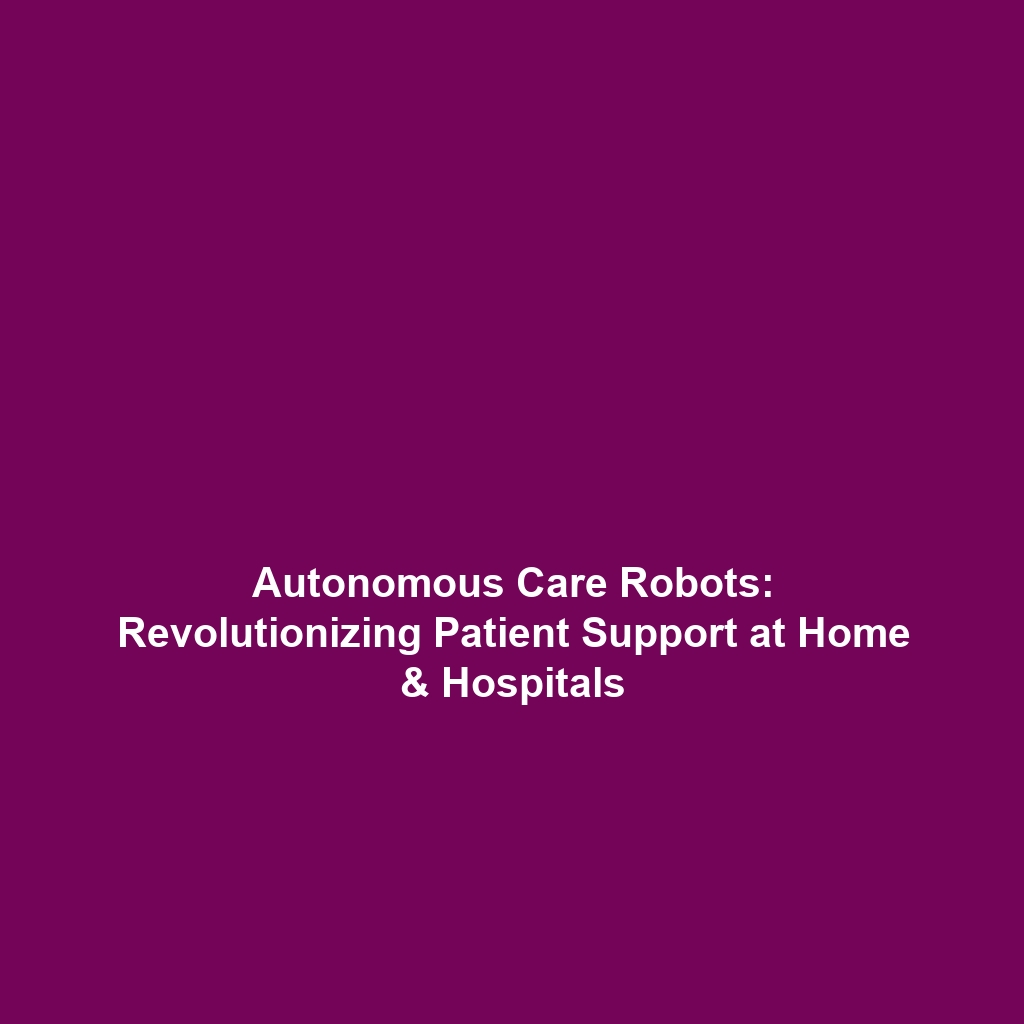Autonomous Care Robots: Assisting Patients in Hospitals and at Home
Introduction
Autonomous Care Robots are revolutionizing the healthcare sector by providing assistance to patients in both hospital and home settings. These autonomous robots are equipped with advanced technologies such as artificial intelligence (AI), machine learning, and robotics, enabling them to perform tasks that enhance patient care and ensure safety. Their significance lies in addressing the growing demand for efficient healthcare solutions in an aging population, thereby improving patient outcomes and reducing the burden on healthcare professionals.
Key Concepts
The major concepts that characterize Autonomous Care Robots include:
- AI Integration: Utilization of artificial intelligence to facilitate interaction with patients and learn from their behaviors.
- Robotic Mobility: Ability to navigate through different environments, such as hospital wards or residential homes, enhancing their utility.
- Remote Monitoring: Capability to track patient vitals and report data to healthcare professionals.
These functions place Autonomous Care Robots within the broader category of Autonomous Robots, showcasing their potential to transform healthcare delivery.
Applications and Real-World Uses
The applications of Autonomous Care Robots in healthcare are vast and varied:
- Medication Delivery: Autonomous robots are used in hospitals to deliver medications to patients, which reduces wait times and minimizes human error.
- Patient Monitoring: These robots can monitor patients’ conditions and provide alerts to staff in case of anomalies.
- Rehabilitation Assistance: Autonomous Care Robots help patients with physical therapy exercises, ensuring adherence to treatment plans.
Understanding how Autonomous Care Robots are employed in healthcare settings highlights their role in enhancing patient safety and workflow efficiency.
Current Challenges
Despite their promise, there are several challenges of Autonomous Care Robots in healthcare:
- Technical Limitations: Issues with navigation in complex environments can hinder effectiveness.
- Ethical Concerns: Questions arise regarding patient privacy and the ethical implications of patient-robot interactions.
- Cost Efficiency: High initial investment costs may limit the adoption of these technologies in smaller healthcare facilities.
Addressing these issues in Autonomous Robots is crucial for the widespread acceptance and integration of these innovative tools.
Future Research and Innovations
The future of Autonomous Care Robots is bright, with ongoing research focused on:
- Enhanced AI Algorithms: Developing smarter AI systems for better patient interaction and decision-making.
- Improved Mobility Solutions: Innovations in robotic design that allow for greater versatility and real-time adaptability.
- Integration with IoT: Future robots are expected to seamlessly connect with other health monitoring devices for comprehensive patient care.
Breakthroughs in these areas could significantly enhance the functionality and acceptance of Autonomous Care Robots in healthcare.
Conclusion
Autonomous Care Robots are poised to transform the healthcare landscape by providing effective, reliable, and safe assistance to patients in hospitals and homes. As we continue to explore their applications and address inherent challenges, these autonomous robots will play an integral role in future healthcare systems. For more information on the impact of technology in healthcare, visit our Healthcare Technology Overview page.
